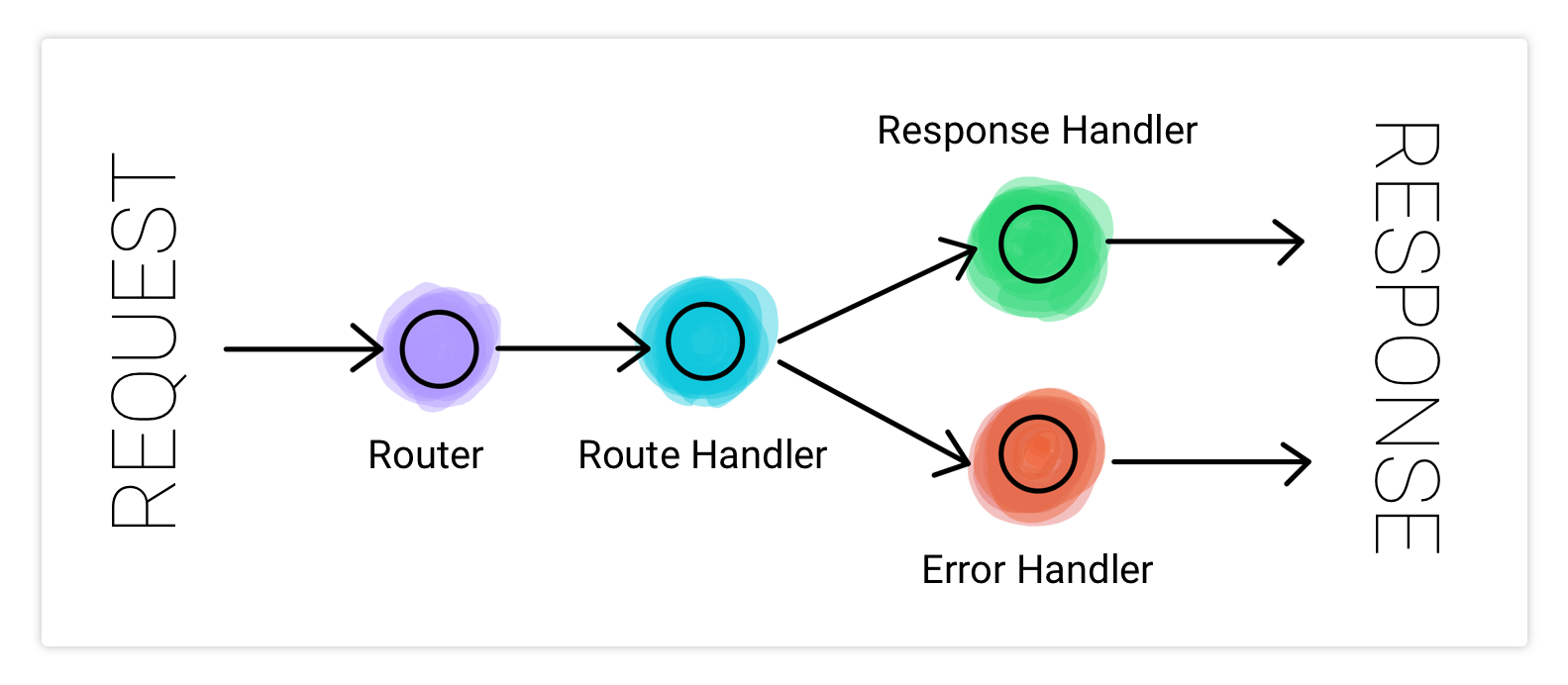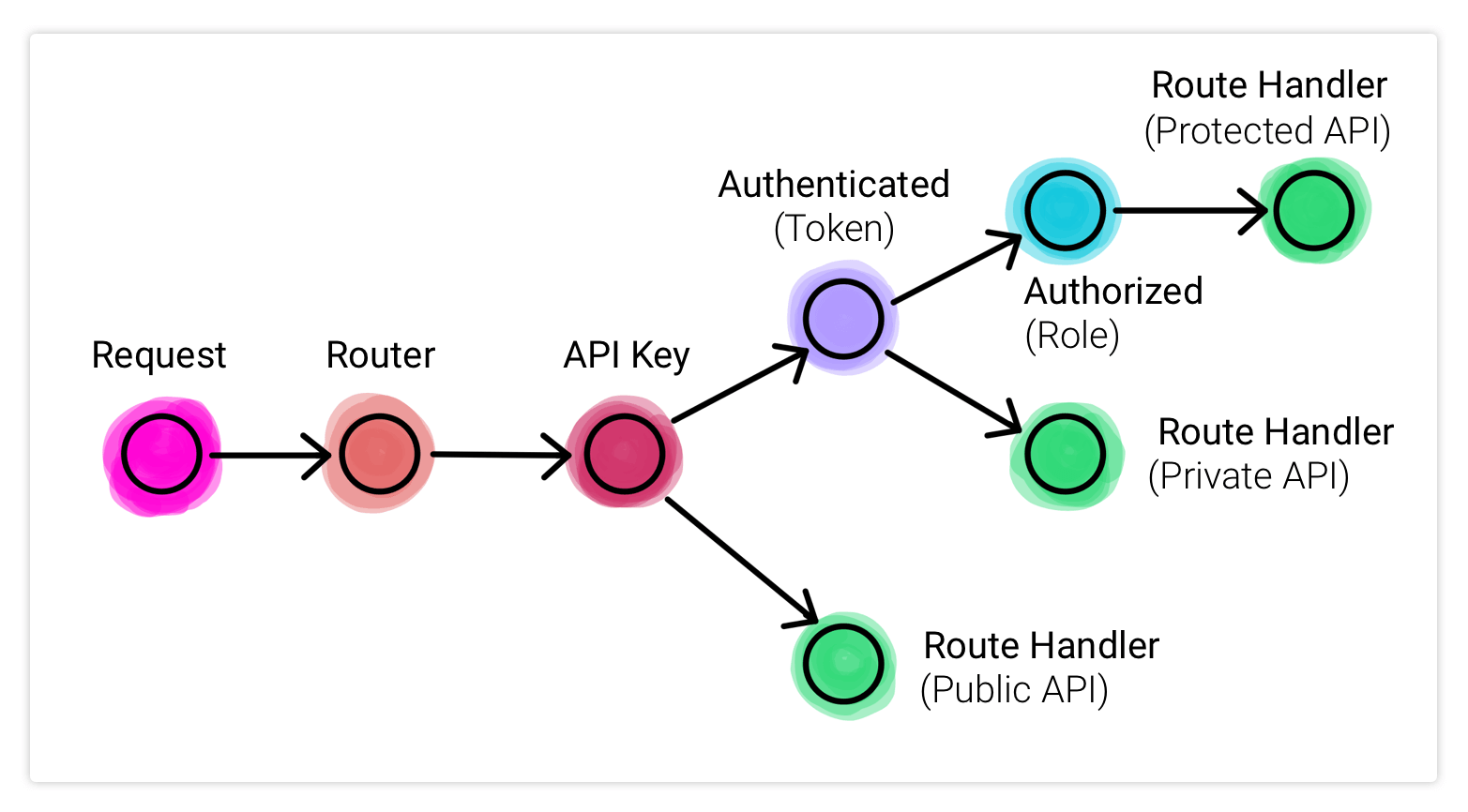:tada: Announcement
A new repository based on Nest.js is also available here Modern Backend Development - WhereIsMyMotivation :confetti_ball:
Node.js Backend Architecture Typescript Project
A complete project to build a blogging platform like Medium, and FreeCodeCamp
Note: This is the latest (version 2) of the project. If you are using version 1 then checkout the branch version-1

Project Highlights
- Node.js
- Express.js
- Typescript
- Mongoose
- Redis
- Mongodb
- Joi
- Unit Tests & Integration Tests
- Docker
- JWT
About The Project
This project is designed for a production ready environment. It can handle the scale and complexity of a very demanding application. This project is being used by companies like MindOrks, AfterAcademy, and CuriousJr. Apps/Websites having 10+ million usebase.
It is suitable for Web Apps, Mobile Apps, and other API services.
About The Author
You can connect with me here:
Project Instructions
We will learn and build the backend application for a blogging platform. The main focus will be to create a maintainable and highly testable architecture.
Following are the features of this project:
- This backend is written in Typescript: The type safety at build time and having intellisense for it in the IDE like vscode is unparalleled to productivity. I have found production bug reduced to a significant amount since most of the code vulnerabilities are identified during the build phase itself.
- Separation of concern principle: Each component has been given a particular role. The role of the components is mutually exclusive. This makes the project easy to be unit tested.
- Feature encapsulation: The files or components that are related to a particular feature have been grouped unless those components are required in multiple features. This enhances the ability to share code across projects.
- Centralised Error handling: I have created a framework where all the errors are handled centrally. This reduces the ambiguity in the development when the project grows larger.
- Centralised Response handling: Similar to Error handling we have a response handling framework. This makes it very convenient to apply a common API response pattern.
- Mongodb is used through Mongoose: Mongodb fits very well to the node.js application. Being NoSQL, fast, and scalable makes it ideal for modern web applications.
- Redis Memcache: I have used the redis server for caching the items which does not change frequently. It will boost the performance of our system.
- Async execution: I have used async/await for the promises and made sure to use the non-blocking version of all the functions with few exceptions.
- Docker compose has been configured: I have created the Dockerfile to provide the easy deployability without any setup and configurations.
- Unit test is favored: The tests have been written to test the functions and routes without the need of the database server. Integration tests has also been done but the unit test is favored.
- A pure backend project: I have experienced that when a backend is developed clubbed with a frontend then in the future it becomes really difficult to scale. We would want to create a separate backend project that servers many websites and mobile apps.
I have also open source a complete blogging website working on this backend project: Goto Repository The repository [React.js Isomorphic Web Application Architecture] has a complete React.js web application implemented for a blogging platform which is using this project as its API server.
3RE Architecture: Router, RouteHandler, ResponseHandler, ErrorHandler

Project Outline: Blogging Platform

Request-Response Handling Schematic Diagram

Learn the concepts used in this project
- Design Node.js Backend Architecture like a Pro
- The video guide to build and run this project
- Implement JSON Web Token (JWT) Authentication using AccessToken and RefreshToken
- TypeScript Tutorial For Beginners
- From JavaScript to TypeScript
You can find the complete API documentation here

How to build and run this project
-
Install using Docker Compose [Recommended Method]
- Clone this repo.
- Make a copy of .env.example file to .env.
- Make a copy of keys/private.pem.example file to keys/private.pem.
- Make a copy of keys/public.pem.example file to keys/public.pem.
- Make a copy of tests/.env.test.example file to tests/.env.test.
- Install Docker and Docker Compose. Find Instructions Here.
- Execute
docker-compose up -din terminal from the repo directory. - You will be able to access the api from http://localhost:3000
- Run Tests:
docker exec -t app npm test - If having any issue then make sure 3000 port is not occupied else provide a different port in .env file.
- If having any issue then make sure 27017 port is not occupied else provide a different port in .env file.
-
Run The Tests
- Install node.js and npm on your local machine.
- From the root of the project executes in terminal
npm install. - Use the latest version of node on the local machine if the build fails.
- To run the tests execute
npm test.
-
Install Without Docker [2nd Method]
- Install MongoDB on your local.
- Do steps 1 to 5 as listed for Install using Docker Compose.
- Do steps 1 to 3 as listed for Run The Tests.
- Create users in MongoDB and seed the data taking reference from the addons/init-mongo.js
- Change the
DB_HOSTtolocalhostin .env and tests/.env.test files. - Execute
npm startand You will be able to access the API from http://localhost:3000 - To run the tests execute
npm test.
-
Postman APIs Here: addons/postman
Learn Backend Development From Our Videos
- Introduction to Web Backend Development for Beginners
- Backend System Design for Startups
- Practical Javascript for Beginners
Project Directory Structure
├── .vscode
│ ├── settings.json
│ ├── tasks.json
│ └── launch.json
├── .templates
├── src
│ ├── server.ts
│ ├── app.ts
│ ├── config.ts
│ ├── auth
│ │ ├── apikey.ts
│ │ ├── authUtils.ts
│ │ ├── authentication.ts
│ │ ├── authorization.ts
│ │ └── schema.ts
│ ├── core
│ │ ├── ApiError.ts
│ │ ├── ApiResponse.ts
│ │ ├── JWT.ts
│ │ ├── Logger.ts
│ │ └── utils.ts
│ ├── cache
│ │ ├── index.ts
│ │ ├── keys.ts
│ │ ├── query.ts
│ │ └── repository
│ │ ├── BlogCache.ts
│ │ └── BlogsCache.ts
│ ├── database
│ │ ├── index.ts
│ │ ├── model
│ │ │ ├── ApiKey.ts
│ │ │ ├── Blog.ts
│ │ │ ├── Keystore.ts
│ │ │ ├── Role.ts
│ │ │ └── User.ts
│ │ └── repository
│ │ ├── ApiKeyRepo.ts
│ │ ├── BlogRepo.ts
│ │ ├── KeystoreRepo.ts
│ │ ├── RoleRepo.ts
│ │ └── UserRepo.ts
│ ├── helpers
│ │ ├── asyncHandler.ts
│ │ ├── permission.ts
│ │ ├── role.ts
│ │ ├── security.ts
│ │ ├── utils.ts
│ │ └── validator.ts
│ ├── routes
│ │ ├── access
│ │ │ ├── credential.ts
│ │ │ ├── login.ts
│ │ │ ├── logout.ts
│ │ │ ├── schema.ts
│ │ │ ├── signup.ts
│ │ │ ├── token.ts
│ │ │ └── utils.ts
│ │ ├── blog
│ │ │ ├── editor.ts
│ │ │ ├── index.ts
│ │ │ ├── schema.ts
│ │ │ └── writer.ts
│ │ ├── blogs
│ │ │ ├── index.ts
│ │ │ └── schema.ts
│ │ ├── index.ts
│ │ └── profile
│ │ ├── schema.ts
│ │ └── user.ts
│ └── types
│ └── app-request.d.ts
├── tests
│ ├── auth
│ │ ├── apikey
│ │ │ ├── mock.ts
│ │ │ └── unit.test.ts
│ │ ├── authUtils
│ │ │ ├── mock.ts
│ │ │ └── unit.test.ts
│ │ ├── authentication
│ │ │ ├── mock.ts
│ │ │ └── unit.test.ts
│ │ └── authorization
│ │ ├── mock.ts
│ │ └── unit.test.ts
│ ├── core
│ │ └── jwt
│ │ ├── mock.ts
│ │ └── unit.test.ts
│ ├── cache
│ │ └── mock.ts
│ ├── database
│ │ └── mock.ts
│ ├── routes
│ │ ├── access
│ │ │ ├── login
│ │ │ │ ├── integration.test.ts
│ │ │ │ ├── mock.ts
│ │ │ │ └── unit.test.ts
│ │ │ └── signup
│ │ │ ├── mock.ts
│ │ │ └── unit.test.ts
│ │ └── blog
│ │ ├── index
│ │ │ ├── mock.ts
│ │ │ └── unit.test.ts
│ │ └── writer
│ │ ├── mock.ts
│ │ └── unit.test.ts
│ ├── .env.test
│ └── setup.ts
├── addons
│ └── init-mongo.js
├── keys
│ ├── private.pem
│ └── public.pem
├── .env
├── .gitignore
├── .dockerignore
├── .eslintrc
├── .eslintignore
├── .prettierrc
├── .prettierignore
├── .travis.yml
├── Dockerfile
├── docker-compose.yml
├── package-lock.json
├── package.json
├── jest.config.js
└── tsconfig.json
Directory Traversal for Signup API call
/src → server.ts → app.ts → /routes/index.ts → /auth/apikey.ts → schema.ts → /helpers/validator.ts → asyncHandler.ts → /routes/access/signup.ts → schema.ts → /helpers/validator.ts → asyncHandler.ts → /database/repository/UserRepo.ts → /database/model/User.ts → /core/ApiResponses.ts
API Examples
- Signup
- Method and Headers
POST /signup/basic HTTP/1.1 Host: localhost:3000 x-api-key: GCMUDiuY5a7WvyUNt9n3QztToSHzK7Uj Content-Type: application/json- Request Body
{ "name" : "Janishar Ali", "email": "ali@github.com", "password": "changeit", "profilePicUrl": "https://avatars1.githubusercontent.com/u/11065002?s=460&u=1e8e42bda7e6f579a2b216767b2ed986619bbf78&v=4" }- Response Body: 200
{ "statusCode": "10000", "message": "Signup Successful", "data": { "user": { "_id": "63a19e5ba2730d1599d46c0b", "name": "Janishar Ali", "roles": [ { "_id": "63a197b39e07f859826e6626", "code": "LEARNER", "status": true } ], "profilePicUrl": "https://avatars1.githubusercontent.com/u/11065002?s=460&u=1e8e42bda7e6f579a2b216767b2ed986619bbf78&v=4" }, "tokens": { "accessToken": "some_token", "refreshToken": "some_token" } } }- Response Body: 400
{ "statusCode": "10001", "message": "Bad Parameters" } - Profile Private
- Method and Headers
GET /profile/my HTTP/1.1 Host: localhost:3000 x-api-key: GCMUDiuY5a7WvyUNt9n3QztToSHzK7Uj Content-Type: application/json Authorization: Bearer <your_token_received_from_signup_or_login>- Response Body: 200
{ "statusCode": "10000", "message": "success", "data": { "name": "Janishar Ali Anwar", "profilePicUrl": "https://avatars1.githubusercontent.com/u/11065002?s=460&u=1e8e42bda7e6f579a2b216767b2ed986619bbf78&v=4", "roles": [ { "_id": "5e7b8acad7aded2407e078d7", "code": "LEARNER" }, { "_id": "5e7b8c22d347fc2407c564a6", "code": "WRITER" }, { "_id": "5e7b8c2ad347fc2407c564a7", "code": "EDITOR" } ] } }
Find this project useful ? :heart:
- Support it by clicking the :star: button on the upper right of this page. :v:
License
Copyright (C) 2024 JANISHAR ALI ANWAR
Licensed under the Apache License, Version 2.0 (the "License");
you may not use this file except in compliance with the License.
You may obtain a copy of the License at
http://www.apache.org/licenses/LICENSE-2.0
Unless required by applicable law or agreed to in writing, software
distributed under the License is distributed on an

 Github
Github 文档
文档










